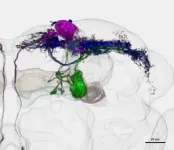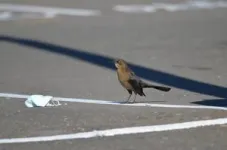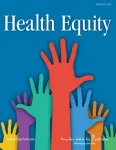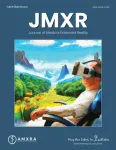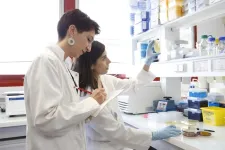(Press-News.org) New research by Janelia scientists and collaborators at the University of North Carolina at Chapel Hill shows how a cluster of neurons in the fruit fly brain transforms memories about past rewards into actions, helping the fly navigate to find food.
Like other insects, flies turn into the wind, or upwind, to locate the source of attractive odors. The fly’s olfactory system detects and senses odors carried by the wind, guiding the fly to the reward.
In the fly, a brain region called the mushroom body processes and integrates olfactory information. Multiple compartments in the mushroom body act in parallel to assign positive or negative values to an odor stimulus, but how these signals are translated into motor actions is unknown.
The new research shows reward memories formed in different compartments of the mushroom body elicit distinct behaviors, with only some driving the fly’s upwind movement. The study identifies a cluster of neurons – Upwind Neurons or UpWiNs – that integrate inhibitory and excitatory inputs from these compartments, causing the fly to turn and move into the wind.
The new research provides insight into how learned positive and negative values are gradually transformed into concrete memory-driven actions. The UpWiNs also send excitatory signals to dopaminergic neurons for higher-order learning, according to the researchers.
These findings help to explain how parallel dopaminergic neurons and memory subsystems interact to guide memory-based actions and learning at the level of individual neural circuits.
END
Researchers identify neurons that guide flies upwind
2023-09-19
ELSE PRESS RELEASES FROM THIS DATE:
How stakeholders are working to advance health equity
2023-09-19
New Rochelle, NY, September 19, 2023–A special issue of the peer-reviewed journal Health Equity titled “How Stakeholders Are Working to Advance Health Equity" covers the following areas: changing mindsets, promoting antiracism in health delivery systems, and promoting antiracism in health policy. Click here to read the issue now.
Guest Editors of the special issue are Laurie Zephyrin, MD, MPH, MBA, Senior Vice President, Advancing Health Equity, The Commonwealth Fund; Claire-Cecile Pierre, MD, Associate Chief Medical Officer, Vice President of Community Health, ...
Recent advances in bread research
2023-09-19
Whether light and fluffy or thin and flexible, bread holds an important place in many cultures and cuisines. And despite millennia of baking experience, scientists are still striving to improve this staple food. Below are some recent papers published in ACS journals that report insights into the quality, healthfulness and preparation of bread. Reporters can request free access to these papers by emailing newsroom@acs.org.
“Unraveling the Influence of Wheat Bran Chemical Composition, Lipolytic Enzyme Activities, and Phenolic Components on the Bread-Making Properties of Reconstituted Whole Wheat Flours”
ACS Food Science & Technology
Sept. 13, 2023
Whole-wheat bread contains ...
Expanding the VR immersion comfort zone
2023-09-19
Near-eye displays are emerging as the future of portable devices, providing individuals with immersive virtual reality experiences. The primary objectives in developing these displays are to create immersive experiences and ensure visual comfort. While a larger field of view (FOV) enhances immersion in virtual reality, addressing the Vergence-Accommodation-Conflict (VAC) is crucial for comfortable vision. Researchers have explored innovative approaches to tackle these challenges. A significant breakthrough in near-eye displays is the integration of light field technology. However, earlier light field displays in VR were limited by their ...
UNC Gillings School to host new CDC center for outbreak forecasting, response
2023-09-19
Today, the UNC Gillings School of Global Public Health was named one of 13 funded partners working alongside the Centers for Disease Control and Prevention (CDC) to establish the Outbreak Analytics and Disease Modeling Network (OADM) – an important step towards creating a nationwide outbreak resource to support more effective responses during public health emergencies.
Each funded partner will provide support in innovation, integration or implementation for outbreak analytics, disease modeling and forecasting. The Gillings ...
International research effort to weigh “green ammonia” impact on climate change and environment
2023-09-19
The U.S. National Science Foundation, UK Research and Innovation, and Natural Sciences and Engineering Research Council of Canada have jointly funded a new global center to address the emerging opportunity and challenge of “green ammonia” to provide clean energy and support food production while mitigating climate change. The Global Nitrogen Innovation Center for Clean Energy and the Environment (NICCEE), spearheaded by the University of Maryland Center for Environmental Science (UMCES) with key partners in the U.S. (New ...
Predictive model could improve hydrogen station availability
2023-09-19
Consumer confidence in driving hydrogen-fueled vehicles could be improved by having station operators adopt a predictive model that helps them anticipate maintenance needs, according to researchers at the U.S. Department of Energy’s National Renewable Energy Laboratory (NREL) and Colorado State University (CSU).
Stations shutting down for unscheduled maintenance reduces hydrogen fueling availability to consumers and may slow adoption of these types of fuel cell electric vehicles, the researchers noted. The use of what is known as a ...
Brennan Spiegel, MD, MSHS appointed Editor-in-Chief of new open access journal, Journal of Medical Extended Reality
2023-09-19
New Rochelle, NY, September 19, 2023—Mary Ann Liebert, Inc. announces the launch of Journal of Medical Extended Reality (JMXR), the new open access peer-reviewed research journal dedicated to the advancement of extended reality in medicine. JMXR is launching in partnership with the American Medical Extended Reality Association (AMXRA), the premier medical society advancing the science and practice of medical extended reality, as their Official Journal. The journal welcomes your submission and will consider virtual, augmented, and mixed reality research, alongside other emerging technologies.
Spearheaded ...
Training the gut’s immune system to combat detrimental effects of emulsifiers in processed food
2023-09-19
In a new study, mice whose immune systems were trained against the microbial protein flagellin did not experience the usual detrimental effects of ingesting food additive emulsifiers, pointing to a potential new way to combat various chronic inflammatory diseases. Melissa Kordahi and Benoit Chassaing, Inserm researchers from the Institut Cochin and Université Paris Cité, France, and colleagues present these findings September 19th in the open access journal PLOS Biology.
Dietary emulsifiers are substances added to processed food products to prevent mixed ingredients from separating. Prior research has suggested that eating certain emulsifiers ...
RNA for the first time recovered from an extinct species
2023-09-19
A new study shows the isolation and sequencing of more than a century-old RNA molecules from a Tasmanian tiger specimen preserved at room temperature in a museum collection. This resulted in the reconstruction of skin and skeletal muscle transcriptomes from an extinct species for the first time. The researchers note that their findings have relevant implications for international efforts to resurrect extinct species, including both the Tasmanian tiger and the woolly mammoth, as well as for studying pandemic RNA viruses.
The Tasmanian ...
New recipes for origin of life may point way to distant, inhabited planets
2023-09-19
Life on a faraway planet — if it’s out there — might not look anything like life on Earth. But there are only so many chemical ingredients in the universe’s pantry, and only so many ways to mix them. A team led by scientists at the University of Wisconsin–Madison has exploited those limitations to write a cookbook of hundreds of chemical recipes with the potential to give rise to life.
Their ingredient list could focus the search for life elsewhere in the universe by pointing out the most likely conditions — planetary versions of mixing techniques, oven temperatures and baking times — for the recipes to come together.
The process ...

